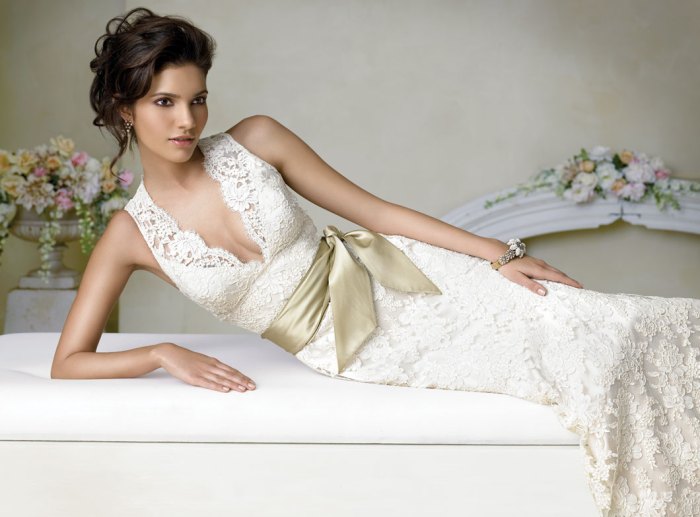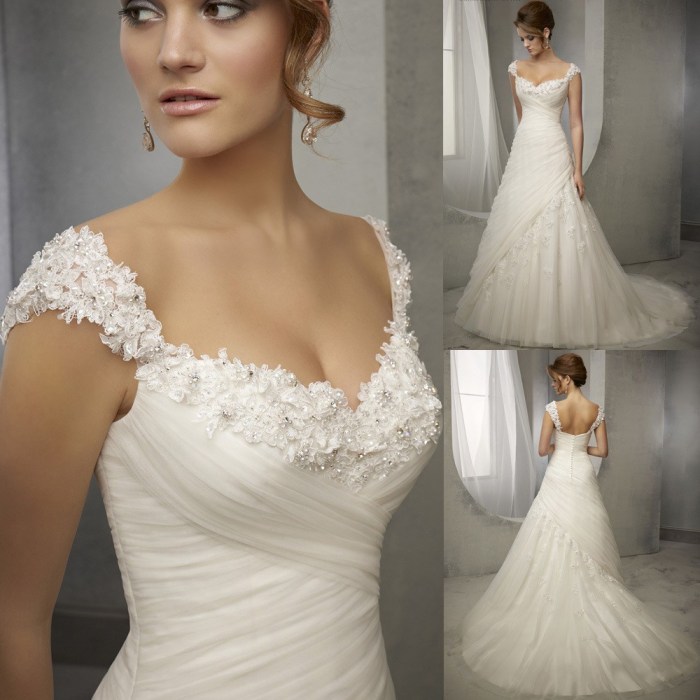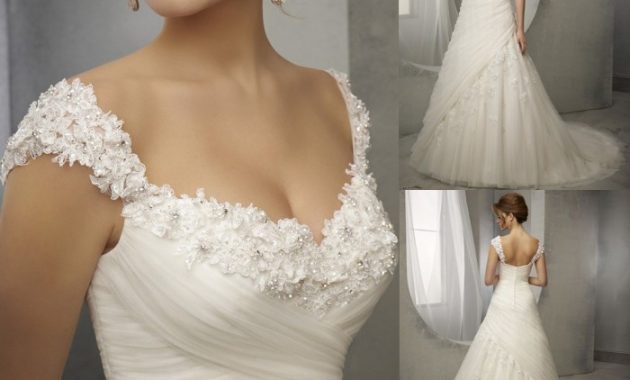Market Overview of Designer Lace Wedding Dresses
The market for designer lace wedding dresses is a lucrative and dynamic segment within the broader bridal industry. This section provides an overview of current trends, key players, pricing, demographics, and geographical distribution of sales.
Current Market Trends
Current trends show a growing preference for sustainable and ethically sourced materials, unique and personalized designs, and a move away from overly traditional styles. Bohemian, romantic, and minimalist aesthetics are particularly popular, often incorporating delicate lace details.
Key Players and Market Share
While precise market share data for individual designers is often proprietary, prominent players in the designer lace wedding dress market include established luxury brands like Vera Wang and Monique Lhuillier, alongside emerging designers gaining recognition through social media and bridal boutiques. These brands cater to different price points and aesthetic preferences, influencing market segmentation.
Price Points and Target Demographics
Price points for designer lace wedding dresses vary significantly, ranging from several thousand dollars for mid-range options to tens of thousands for haute couture designs. Target demographics span a wide range, from millennials and Gen Z brides seeking modern and unique styles to older brides prioritizing classic elegance and high-quality craftsmanship. Marketing strategies are tailored to these diverse groups.
Geographical Distribution of Sales and Demand
Sales and demand for designer lace wedding dresses are geographically concentrated in regions with high disposable incomes and strong bridal markets, such as North America, Europe, and parts of Asia. However, the increasing global reach of online retailers and bridal publications is expanding market access to other regions.
Design Elements and Styles of Designer Lace Wedding Dresses
The beauty of a designer lace wedding dress lies in the intricate details and the harmonious blend of lace patterns, silhouettes, necklines, and sleeve styles. This section explores the key design elements contributing to the overall aesthetic.
Lace Patterns and Descriptions
| Lace Pattern | Description | Lace Pattern | Description |
|---|---|---|---|
| Chantilly | A delicate, sheer lace with a floral or geometric pattern, often used for overlays or veils. | Alençon | A heavier, more intricate lace with a distinct, raised pattern, known for its elegance and sophistication. |
| Guipure | A heavier, thicker lace with a raised pattern, often used for structured bodices or skirts. | Venice | A delicate, sheer lace with a simple, repetitive pattern, often used for romantic and ethereal designs. |
Silhouettes

Source: bestbride101.com
Lace wedding dresses are beautifully complemented by a variety of silhouettes. A-line gowns offer a flattering and classic look, while mermaid silhouettes create a dramatic and figure-hugging effect. Ballgown styles provide a romantic and voluminous aesthetic, ideal for grand celebrations. Sheath silhouettes offer a more streamlined and modern look.
Necklines and Sleeve Styles
Necklines such as sweetheart, V-neck, and halter necks are frequently paired with lace, offering diverse options for brides. Sleeve styles range from sleeveless and cap sleeves to long sleeves, often featuring lace detailing that complements the gown’s overall design. Off-the-shoulder styles are also increasingly popular.
Impact of Different Lace Fabrics
The choice of lace fabric significantly influences the final look. Chantilly lace lends a delicate and romantic feel, while Alençon lace exudes luxury and sophistication. Guipure lace adds structure and texture, while other laces offer a variety of textures and patterns, impacting the overall aesthetic of the gown.
Manufacturing and Production of Designer Lace Wedding Dresses
The creation of a designer lace wedding dress is a meticulous process, involving skilled artisans and advanced techniques. This section details the steps involved, materials used, and ethical considerations.
Steps in Designing and Creating a Designer Lace Wedding Dress
- Initial concept and design sketches
- Fabric selection and sourcing
- Pattern making and cutting
- Lace application and embellishment
- Sewing and construction
- Final fitting and adjustments
- Quality control and inspection
Materials and Techniques, Designer lace wedding dresses
High-end lace wedding dresses often utilize luxurious fabrics such as silk, satin, and tulle, combined with intricate lacework, hand-beading, embroidery, and other embellishments. Advanced sewing techniques and meticulous attention to detail are crucial for achieving a high-quality finish.
Manufacturing Processes: Designer vs. Mass-Produced
Designer lace wedding dresses are typically handcrafted or produced in small batches, using high-quality materials and meticulous attention to detail. Mass-produced dresses often utilize less expensive materials and automated production methods, resulting in differences in quality, fit, and overall aesthetic.
Ethical Considerations and Sustainability
The industry is increasingly focusing on ethical sourcing of materials, fair labor practices, and sustainable manufacturing processes. Transparency in supply chains and commitment to reducing environmental impact are becoming important factors for discerning consumers.
Marketing and Sales Strategies for Designer Lace Wedding Dresses
Effective marketing is crucial for establishing a successful brand in the competitive designer wedding dress market. This section Artikels strategies for reaching target audiences and building brand loyalty.
Designer lace wedding dresses offer exquisite detail and timeless elegance. For a more modern and unconventional approach, consider a contrasting style; perhaps a chic alternative like a black tea length dress for wedding could be a striking choice for a bridesmaid or even a non-traditional bride. Ultimately, the perfect dress depends on personal style, but the beauty of designer lace remains a classic option.
Marketing Campaign for a New Line
A marketing campaign targeting millennial brides interested in bohemian-chic styles could utilize Instagram influencers, collaborations with wedding bloggers, and targeted advertising on social media platforms. The campaign would emphasize the unique design details, sustainable practices, and personalized service offered.
Effective Marketing Channels
Effective channels include social media marketing (Instagram, Pinterest), print advertising in bridal magazines, participation in bridal shows and trunk shows, and collaborations with wedding planners and photographers. Public relations and influencer marketing are also important.
Building Brand Awareness and Loyalty
Strategies include consistent branding across all platforms, exceptional customer service, building a strong online presence, creating engaging content, and fostering a community around the brand. Loyalty programs and exclusive events can also enhance customer engagement.
Importance of Customer Service and After-Sales Support

Source: alicdn.com
Providing exceptional customer service, including personalized consultations, alterations, and timely responses to inquiries, is paramount in the wedding dress industry. After-sales support, such as cleaning and preservation services, can further enhance customer satisfaction and brand loyalty.
Visual Representation of Designer Lace Wedding Dresses
This section provides detailed descriptions of three distinct designer lace wedding dresses, highlighting the interplay of lacework, fabrics, and color palettes.
Dress 1: Bohemian Rhapsody
A flowing A-line gown crafted from ivory silk tulle, adorned with delicate Chantilly lace appliqués cascading down the skirt. The bodice features a V-neckline and delicate spaghetti straps, complemented by intricate beading along the waistline. The overall effect is effortlessly romantic and bohemian-chic.
Dress 2: Classic Elegance
A classic ballgown silhouette in champagne satin, featuring Alençon lace panels meticulously placed on the bodice and skirt. The gown boasts a sweetheart neckline, long sleeves, and a fitted bodice, creating a timeless and elegant look. Delicate pearl beading adds subtle shimmer.
Dress 3: Modern Minimalism
A sleek sheath gown in blush silk crepe, accented with subtle Guipure lace detailing along the neckline and sleeves. The minimalist design emphasizes clean lines and sophisticated simplicity. The delicate lace adds a touch of texture and visual interest without overwhelming the overall aesthetic.
Impact of Fabrics and Color Palettes
Silk creates a luxurious drape and subtle sheen, while satin offers a more polished and glamorous finish. Tulle provides a lightweight and ethereal quality. Ivory evokes classic elegance, champagne offers a warm and romantic feel, and blush creates a soft and modern aesthetic. The choice of fabric and color significantly impacts the overall mood and appearance of the gown.
Top FAQs
What are the typical price ranges for designer lace wedding dresses?
Price ranges vary significantly based on designer, fabric, embellishments, and complexity, typically starting from several thousand dollars and extending into tens of thousands.
How long does it typically take to custom-design and create a designer lace wedding dress?
The timeframe can range from several months to over a year, depending on the designer’s workload, the complexity of the design, and the availability of materials.
Can I alter a designer lace wedding dress after purchase?
Yes, many designers offer alteration services, or you can consult a reputable seamstress specializing in bridal wear. However, extensive alterations may affect the integrity of the design.
What are some common ethical considerations in the designer lace wedding dress industry?
Ethical considerations include fair labor practices, sustainable sourcing of materials, and transparency in the supply chain.

